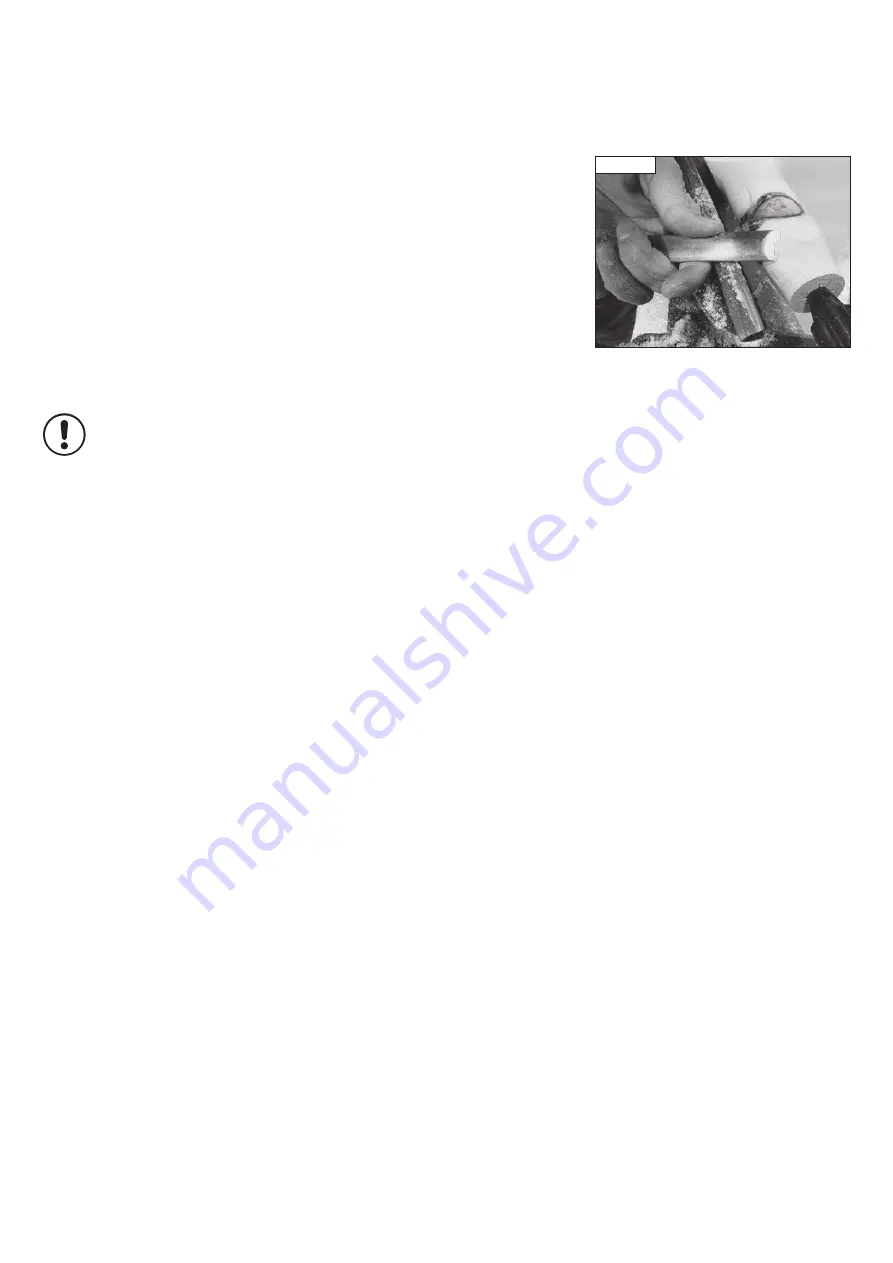
26
Using the Skew Chisel
Skew chisels are available in both flat and oval profiles. The curved profile
is favoured by many as it gives better results more easily. Skew chisels are
ideal for creating beads, refining the profiles and can be used to create a
final smooth finish to the workpiece. The skew chisel should be applied
to the workpiece horizontally with the blade resting on the tool rest,
Fig
12.11
, again with the bevel rubbing the workpiece and raising the handle to
take careful, controlled cuts.
Further Operations
The guidelines above give basic instructions on some of the most common
woodturning procedures. There are a wide variety of specialised chisels and
many complementary accessories available for Record Power lathes which
enable a huge variety of work to be created. For further instructions on more
advanced safe and effective woodturning, please seek professional training.
Speeds of the Lathe
To ensure the safest possible use of the lathe, it is important to understand
which speeds are suited to which tasks. In general, the slower speeds should
be used for the initial turning and roughing out of large pieces and the
slowest speed should be used when large pieces are out of balance. This will
reduce the possibility of the workpiece being thrown from the lathe.
Medium speeds are ideally suited for general purpose work which doesn’t
place heavy loads on the spindle of the lathes, for example when creating
the profiles of spindles and some smaller bowl turning.
The fastest speeds should be used only for small diameter work, where
the size of workpiece is relatively small and therefore poses a lower risk
of causing damage. Extra care should be taken when turning at the fastest
speeds, using only a relatively light touch.
When sanding, care should be taken to not burn the operator’s hands or
the workpiece. It is recommended to not exceed the speed used for the last
turning operation. If in doubt, use a slow speed.
12. Intended Use of the Lathe and Basic
Woodturning Instructions
Fig 12.11
i
Kg































